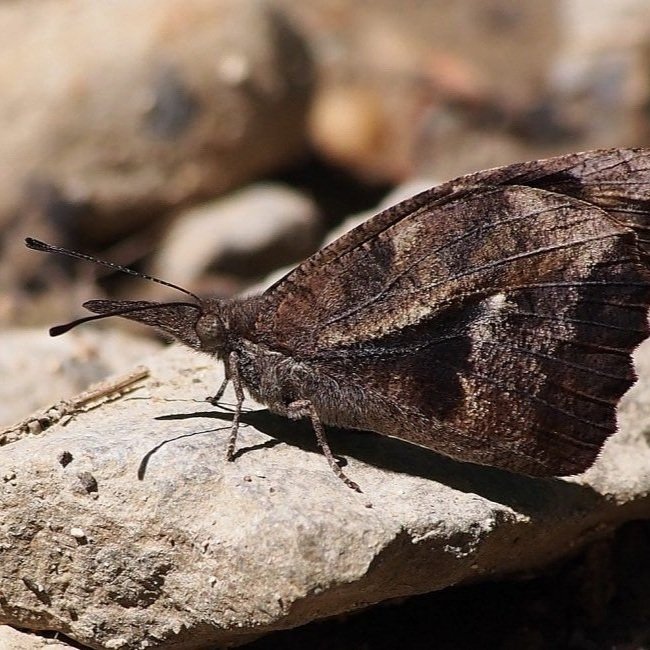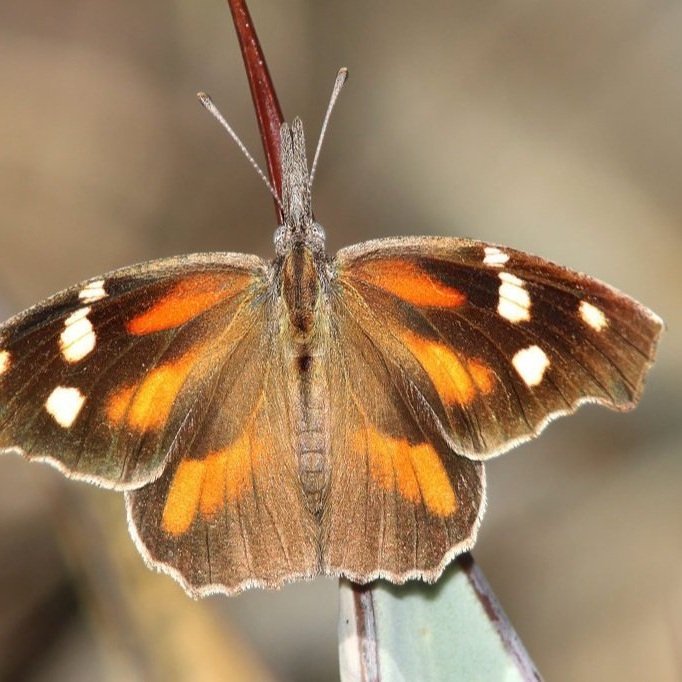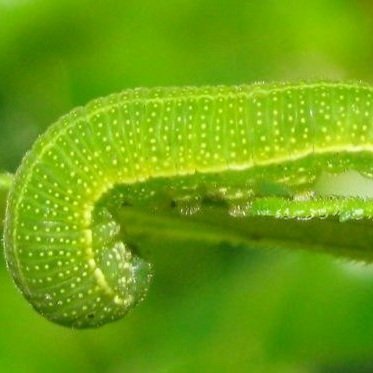INSECTOS
Mariposa de hocico americano
La mariposa hocicona americana (Libytheana bachmanii) recibe su nombre de sus partes bucales alargadas que, efectivamente, se asemejan a un hocico. Estos insectos disfrutan alimentándose del néctar de las flores de la vara de oro, el áster y el cornejo, entre muchas otras. Suelen habitar en campos llenos de maleza, claros de bosques y bordes de caminos. Cuando son orugas, estas mariposas son de color verde oscuro, pero cuando alcanzan la madurez conservan las alas con un patrón naranja y blanco y un sombreado general negro/marrón.
Aunque esta criatura es nativa del sur y el suroeste, se incluye en la ecología del Parque Pease debido a sus esporádicas migraciones masivas que pasan por el Parque Pease y gran parte de Austin. Se cree que los auges poblacionales de las mariposas hocicudas americanas están correlacionados con las lluvias intensas que siguen a periodos prolongados de sequía. Esto se debe, en parte, a la abundante floración de los árboles de almez que son parte integrante de esta especie de insecto. Las hojas del almez proporcionan un lugar para depositar los huevos y, a continuación, el alimento esencial para el desarrollo de las orugas.
Oruga de las marismas saladas y polilla de las marismas saladas
Estas orugas "oso lanudo" de pelo denso se convierten en polillas de tamaño moderado con manchas en las alas. Las larvas se alimentan de hojas de una gran variedad de plantas, tanto leñosas como no leñosas. De jóvenes, las orugas son gregarias (se alimentan en grupo). A medida que crecen, se desplazan por el suelo en busca de alimento.
Mosca ladrona (Efferia aestuans)
Las moscas ladronas tienen patas robustas y espinosas, un denso bigote de cerdas en la cara y tres ojos simples entre sus dos grandes ojos compuestos.
Tienen una probóscide corta y fuerte que utilizan para apuñalar e inyectar a las víctimas saliva que contiene enzimas neurotóxicas y proteolíticas que paralizan y digieren las entrañas. A continuación, la mosca succiona el alimento licuado de su presa (insectos más pequeños).
Almirante rojo
La mariposa Almirante Rojo tiene una distribución que abarca Norteamérica, Sudamérica, Europa y Asia. Se trata de la mariposa más comúnmente vista en paisajes urbanos debido a sus numerosas plantas hospedadoras: más de 50 géneros de plantas diferentes.
Los almirantes rojos machos son muy territoriales, por lo que a menudo se les ve persiguiéndose unos a otros desde sus dormideros.
Las mariposas que viven en latitudes más septentrionales emigran a estados del Sur, como Texas, para evitar la pérdida de recursos alimenticios en invierno.
Esfinge de líneas blancas
Esta polilla se alimenta del néctar de diversas flores. Con alas de 5 cm de ancho, esta polilla se confunde a menudo con un colibrí. Y del mismo modo, utilizan una probóscide (pajita) para sorber el néctar.
Vireta gris
Esta polilla se alimenta de muchas especies de flores y está dispersa por todo el territorio continental de Estados Unidos. Esta está disfrutando del néctar de una Bluebonnet en Pease Park.









